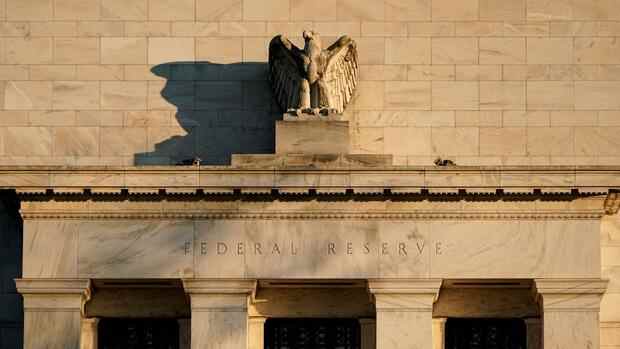The US Federal Reserve has already initiated its change of course in monetary policy.
(Photo: Reuters)
Washington The US Federal Reserve (Fed) is preparing the markets for a sharp change in course. The central bankers are planning to quickly reduce the Fed’s total assets, which had swelled to almost nine trillion dollars during the pandemic. The Fed is considering letting bonds worth up to $95 billion a month expire and not reinvesting them.
This emerges from the meeting minutes of the most recent meeting in mid-March, which was published on Wednesday. This step is to be finally decided at the forthcoming Fed meeting in early May. The reduction would thus be twice as fast as the previous one from 2017. At that time, however, the inflation rate was also significantly lower.
A number of central bankers had already made their concerns about the rapidly rising prices clear in the past few days.
“I expect a series of targeted and systematic rate hikes over the course of this year,” Patrick Harker, chief of the Philadelphia regional central bank, said on Wednesday. In a speech on Tuesday, Fed Governor Lael Brainard signaled that central bankers could reduce total assets very quickly. As a result, yields on ten-year government bonds rose significantly.
Top jobs of the day
Find the best jobs now and
be notified by email.
Thomas Barkin, head of the regional central bank in Richmond, brought another interest rate hike of 0.5 percentage points into play on Wednesday. “We’ve done that in the past and we could certainly do it again to prevent inflation expectations from becoming unanchored.”
The inflation rate has long been well above the Fed’s target of around two percent. In February it was 7.9 percent. According to economists, it could rise to over ten percent in the summer.
The upcoming Fed meeting is scheduled for May 3rd and 4th. Fed Chair Jerome Powell had previously signaled that he was open to a so-called double hike in interest rates. As a rule, monetary policymakers raise interest rates by a quarter of a percentage point.
Concerns about rapidly rising interest rates weighed on US stock markets on Tuesday and Wednesday. The stock markets then initially reacted with relief to the publication of the Fed minutes. Some economists had expected mining of $100 billion a month or more.
But the stock markets quickly turned negative again. The Dow Jones was down a good 1 percent in the New York afternoon, the broad S&P 500 was down 0.7 percent and the Nasdaq’s tech stocks were down 2.9 percent.
More: Investors in the financial markets should pay attention to these five risks
